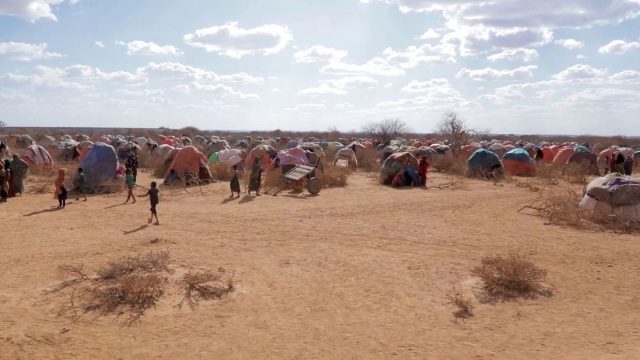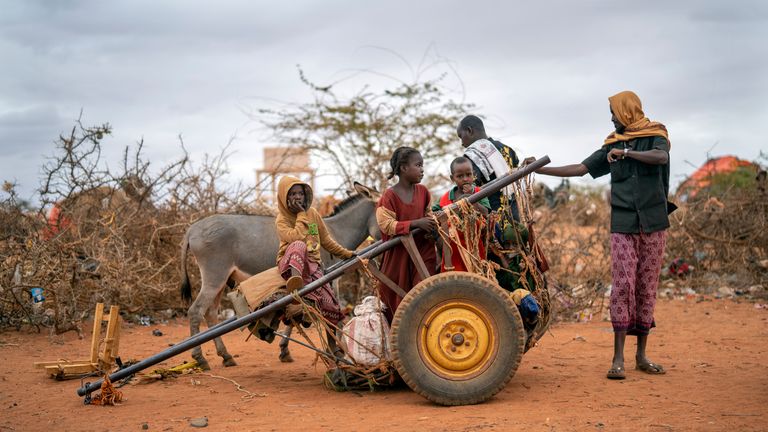The severe drought devastating the Horn of Africa by killing animals and crops and leaving millions without enough food would not have happened if humans had not heated the planet, scientists have concluded.
Since October 2020, season after season of failed rains in the eastern tip of the continent have brought the worst drought in 40 years, driving conflict and leaving more than four million people needing humanitarian aid.
Nineteen scientists from seven nations assessed if climate change had disrupted rainfall in the region and impacted agricultural drought, when crops and pastures are affected by dry conditions.
They found that the rainy season – March through to May – is turning drier, and the short rains season – typically October through December – is becoming wetter due to climate change.
They called the region’s experience with drought “one of a kind”.
Human-caused climate change has made agricultural drought in the Horn of Africa about one hundred times more likely, they said, adding the “ongoing devastating drought would not have happened at all without the effect of greenhouse gas emissions”.
Joyce Kimutai, head meteorologist at the Kenya Meteorological Department, said: “Climate change has made the drought exceptional.”
As a result, 20 million people are at risk of acute food insecurity.
The team from the World Weather Attribution group, which specialises in rapid analysis of whether extreme weather was influenced by climate change, analysed historical weather data, including changes in the two main rainfall patterns in the region, alongside computer model simulations dating back to the 1800s.
While climate change has made drought more frequent and extreme in the Horn region, the scientists acknowledged that previous failed rainy seasons, high temperatures, conflict, fragile statehood and poverty are also to blame for the “devastating impacts”.
Read more:
Drought, disease and conflict: Somalia is fighting a battle on all fronts
UN estimates 43,000 deaths last year as 500,000 children likely to be malnourished
Cheikh Kane, climate resilience policy advisor at the Red Cross Red Crescent Climate Centre, said: “People in the Horn of Africa are no strangers to drought, but the duration of this event stretched people beyond their ability to cope.
“Five consecutive seasons of below-normal rainfall, combined with rain-dependent livelihoods and vulnerability multipliers, like conflict and state fragility, have created a humanitarian disaster.”
Friederike Otto, senior climate scientist at Imperial College London and the leader of the study, said it underscored how climate change’s effects “strongly depend on how vulnerable we are”.
The United Nations said more than 20 million people in Kenya, Ethiopia, Somalia, Uganda and South Sudan have been affected by the drought, with more than 2.2 million displaced in Somalia and Ethiopia and severe maternal risks to hundreds of thousands of expectant or breastfeeding women.
Rod Beadle, head of relief and humanitarian affairs at Food for the Hungry, said almost 15 million children are exposed to acute malnourishment.
“Despite the recent rains in North Kenya, the pressure from previous failed seasons makes for a dire situation,” he said.
“The drought conditions have resulted in severely compacted soil that cannot absorb the water; hence the floods are more severe.
“The country is also facing severe outbreaks of cholera and other diseases as more refugees arrive.”
Watch the Daily Climate Show at 3.30pm Monday to Friday, and The Climate Show with Tom Heap on Saturday and Sunday at 3.30pm and 7.30pm.
All on Sky News, on the Sky News website and app, on YouTube and Twitter.
The show investigates how global warming is changing our landscape and highlights solutions to the crisis.



















